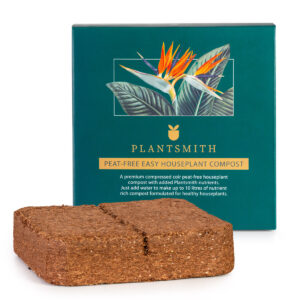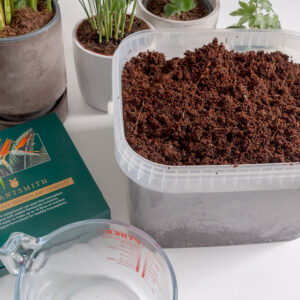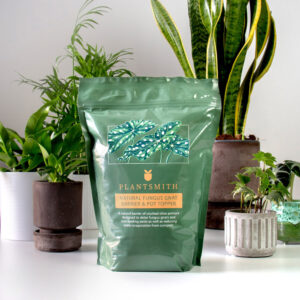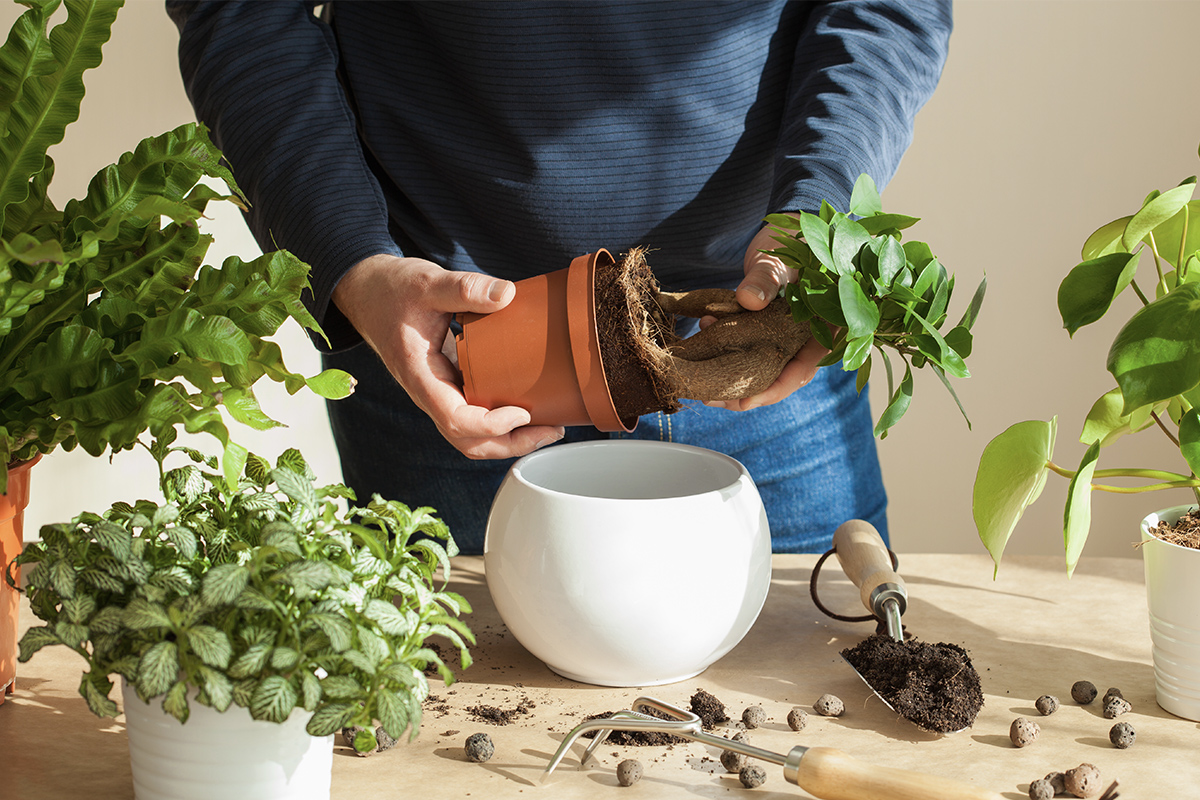When you buy new houseplants they will generally do well in the same container for months or even years, if they are particularly slow growing. However, all will eventually outgrow their pots and need moving into bigger ones to avoid a check in growth. If you’ve never re-potted houseplants, don’t worry, it’s super easy.
Tell tale signs your houseplant needs repotting
Keep a close eye on your plants and they’ll let you know when they need re-potting. If they dry out quickly and need more frequent watering than usual to preventing wilting, then the chances are roots are taking up a lot of space in the pot – roots might also be poking their way out of the drainage holes in the base or pushing the plant out of the pot. Pot bound plants also tend to grow sluggishly, if at all.
When to repot your houseplant
It’s best to re-pot houseplants in early spring before the start of their growing season – those raised under artificial lights tend to grow all year round, so can be re-potted at any time. As a rule, most need re-potting every 12 to 18 months, but some fast-growing varieties may need re-potting several times during spring and summer. Avoid re-potting flowering houseplants while they are in bud or in full bloom.
What kind of pot
It’s best to use pots that are just slightly bigger than the ones you are replacing – place the old pot inside the new one, and if there’s enough room around the outside for your thumb, it’s ideal. Don’t pick containers that are overly large as they will hold too much moisture, resulting in roots rotting. Always use pots with plenty of drainage holes in the base.
How to repot your plant
Once you are sure a houseplant needs re-potting, slide the rootball of compost carefully out of the container – if it doesn’t come out easily, try rolling the pot between the palms of your hands to loosen roots. Plants that are really pot bound might be stubborn. Free the rootball by cutting off plastic pots or running a knife carefully around the inside.
Add a layer of houseplant compost the base of your chosen pot. Place the plant in the centre and ensure there’s a 5cm (2in) gap between the compost’s surface and the rim of the container to allow space for watering. Fill the gap around the outside with compost, firming with your fingertips. Make sure that it comes up to the same level as the rootball.
Finishing touches
Place the pot in a saucer of water, adding more until the surface is damp. Pop the newly re-potted houseplant into a decorative cover and enjoy.








